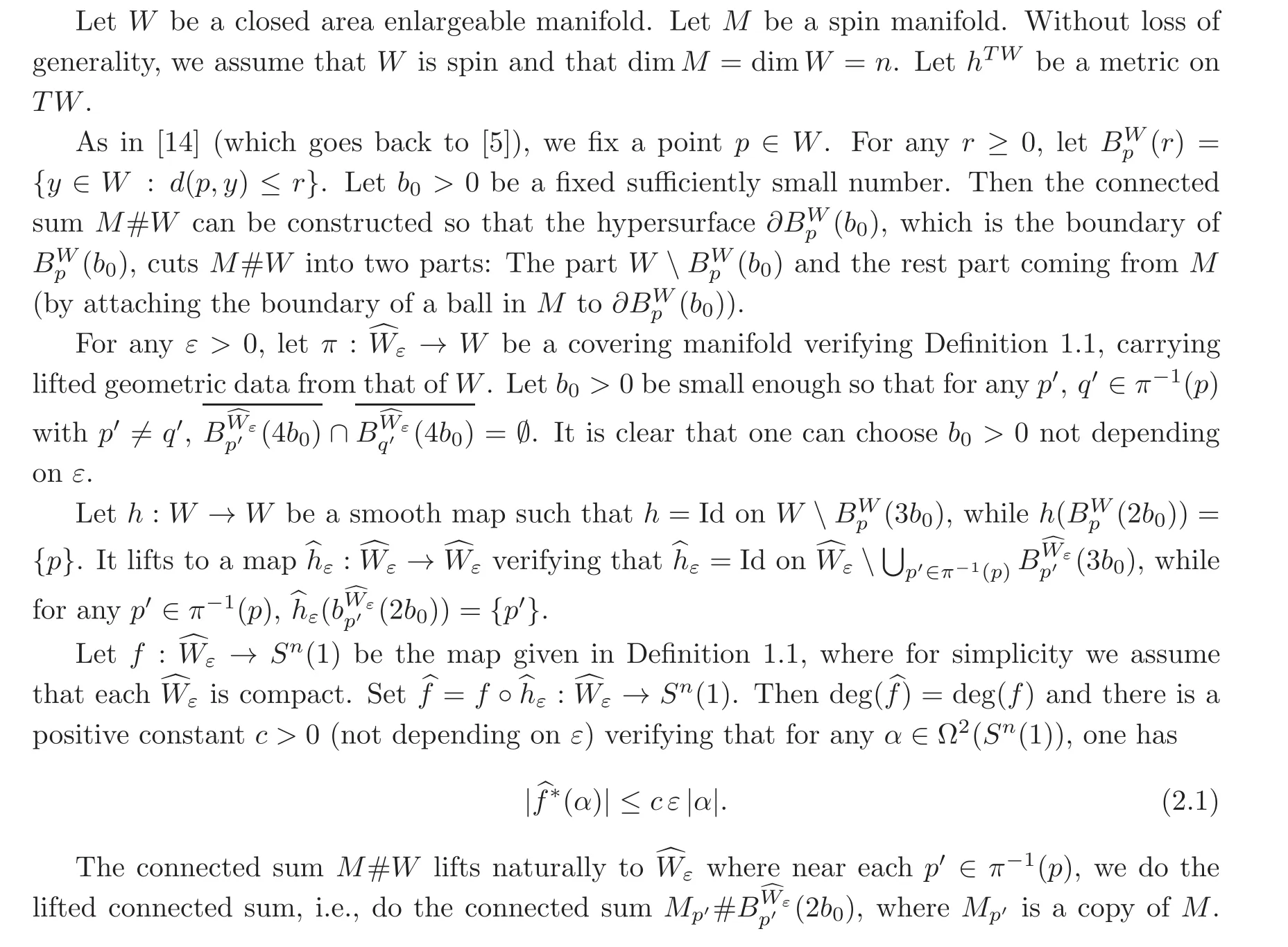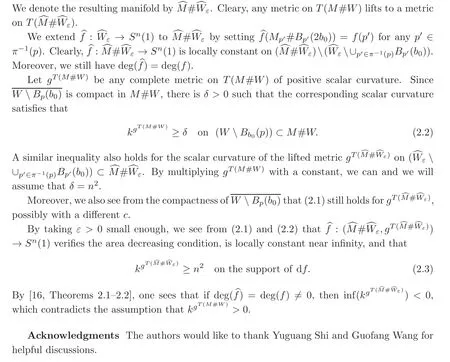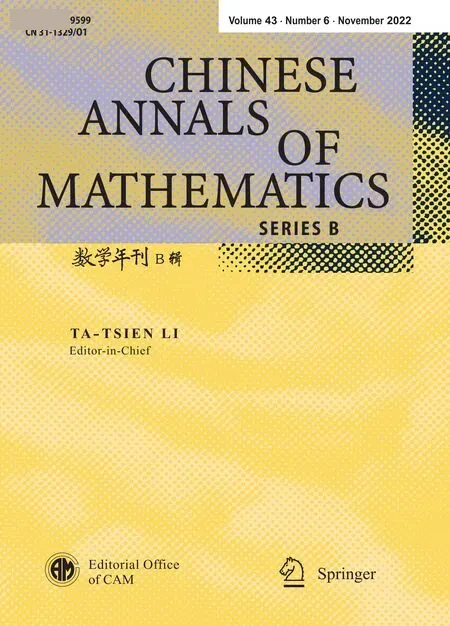On the Generalized Geroch Conjecture for Complete Spin Manifolds∗
2022-12-06XiangshengWANGWeipingZHANG
Xiangsheng WANG Weiping ZHANG
Abstract Let W be a closed area enlargeable manifold in the sense of Gromov-Lawson and M be a noncompact spin manifold,the authors show that the connected sum M#W admits no complete metric of positive scalar curvature.When W=Tn,this provides a positive answer to the generalized Geroch conjecture in the spin setting.
Keywords Positive scalar curvature,Connected sum,Spin manifolds
1 Introduction
It has been an important subject in differential geometry to study when a smooth manifold carries a Riemannian metric of positive scalar curvature.A famous theorem of Gromov and Lawson[4—5]states that an area enlargeable manifold(in the sense of[5])does not carry a metric of positive scalar curvature.
Definition 1.1(Gromov-Lawson[5])One calls a closed manifold W(carrying a metric gTW)an area enlargeable manifold if for any ε>0,there is a covering manifold π:(carrying the lifted metric),withbeing spin,and a smooth map f:(1)(the standard unit sphere),which is constant near infinity and has non-zero degree,such that for any two form α ∈ Ω2(Sdim W(1)),one has|f∗(α)|≤ ε|α|.
It is clear that the area enlargeability does not depend on the metric gTW.
Theorem 1.1 Let W be a closed area enlargeable manifold and M be an arbitrary spin manifold of equal dimension.Then the connected sum M#W does not admit any complete metric of positive scalar curvature.
When M is closed,Theorem 1.1 is exactly the Gromov-Lawson theorem(see[4—5])mentioned at the beginning.When W=Tn,Theorem 1.1 solves the following generalized Geroch conjecture(see[17,Conjecture 1.4])in the spin setting.
Conjecture 1.1 For any manifold M of dimension n,there is no complete metric of positive scalar curvature on Tn#M.
The remarkable fact(see[7])is that Conjecture 1.1 for the case of compact M(first proved by Schoen-Yau[10]in dimension≤7)implies the positive mass theorem for M,which in the spin case was proved by Witten[15](see also[9])using Dirac operators(the classical positive mass theorem in dimension three was first proved by Schoen-Yau[11]using minimal hypersurface method which works for dimension≤7,see[12]),while a proof in the nonspin case for all dimensions is given by Schoen-Yau[13]by further developing their minimal hypersurface techniques(see also Lohkamp[8]for another minimal hypersurfaces approach in the higher dimensional situation).
If 3≤dim M≤7,then Conjecture 1.1 has been proved for arbitrary M by Chodosh and Li[3],with the case of dim M=3 also proved by Lesourd-Unger-Yau[6].A recent paper by Zhu[17]shows that Conjecture 1.1 implies the positive mass theorem with arbitrary ends,which in the spin setting has been proved in[1](see also[2,Theorem B]).Thus Theorem 1.1 gives an alternate proof of the positive mass theorem with arbitrary ends in the spin setting.
Our proof of Theorem 1.1 is based on deformed Dirac operators as were used in[16].Indeed,by using a trick in[14](which goes back to[5]),we show that Theorem 1.1 reduces to the situation already considered in[16].
2 A Proof of Theorem 1.1


杂志排行
Chinese Annals of Mathematics,Series B的其它文章
- Holomorphic Retractions of Bounded Symmetric Domains onto Totally Geodesic Complex Submanifolds
- Convergence in Conformal Field Theory
- Heat Transfer Problem for the Boltzmann Equation in a Channel with Diffusive Boundary Condition∗
- Extrapolated Smoothing Descent Algorithm for Constrained Nonconvex and Nonsmooth Composite Problems∗
- Recent Progress in Applications of the Conditional Nonlinear Optimal Perturbation Approach to Atmosphere-Ocean Sciences∗
- Holomorphic Curves into Projective Varieties Intersecting Closed Subschemes in Subgeneral Position∗
